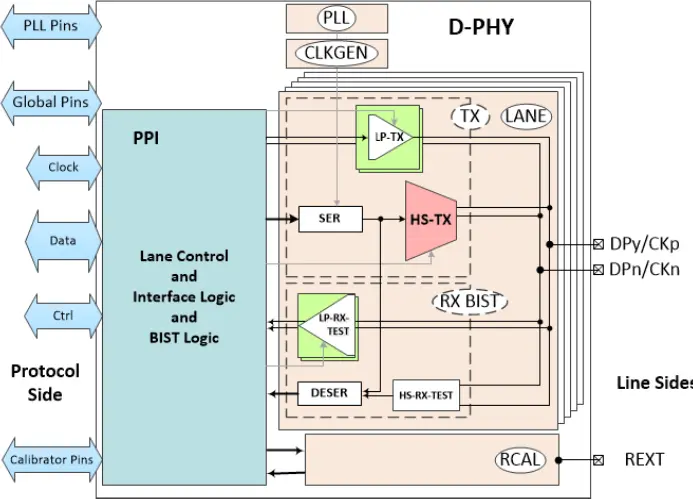MIPI built its reputation on the efficient streaming of data from camera sensors in mobile devices. It combines high-speed transfers with balanced power consumption, helping extend battery life while providing the responsiveness users expect. However, high speed is not the only mode of operation for a MIPI interface – specifications also enable low power modes for slower data transfers, going to an ultra-low-power shutdown state when data communication is inactive. These low-power modes are gaining more attention as MIPI-based cameras see adoption in automotive, IoT, augmented and virtual reality (AR and VR), industrial, and medical applications. A new white paper from Mixel jointly authored with ams-OSRAM outlines an ultra-low-power MIPI use case for streaming sensors.
Borrowing a proven power management concept
The idea behind various power modes in power-sensitive applications isn’t new. Commercial microcontrollers specify modes like full-on, doze, nap, sleep, and deep-sleep, intending that staying in a lower-power mode as much as possible conserves power. Low-duty-cycle operation often matches sensor applications with lower sample rates and periodic data bursts. Work like computations and data transmission happens around each burst, returning to sleep between bursts. The result is a much lower average power consumption.

Streaming sensors, like digital image sensors, pose a different problem. Delivering video for human consumption requires more pixels and faster frame rates; otherwise, the experience becomes uncomfortable to watch. Higher resolution, higher frame rate video is costly – with a more powerful SoC to sample, process, and transmit the stream. SoC designers can use clock and power gating techniques to shut down IP blocks when they are unneeded, but when the video stream is on, there seems to be no choice except to use more power.
In many sensor applications, the point is for humans not to watch the streaming video 24/7. The sensor should be smart enough to monitor a scene with nothing of interest until a moment when something starts happening. A dual-context sensor can lower frame rate, resolution, and MIPI transfer rates, shifting into full-power mode only when a change occurs, such as motion. Managing event detection creates a massive power-saving opportunity, maybe 20x or more.
Changing lanes of the MIPI interface
MIPI architects anticipated scenarios like these when they wrote the MIPI specifications. Compliant IP blocks have both a high-speed and low-power lane, with the latter running at a fraction of the data rate. Control logic external to the IP block determines which lane to use.
Mixel MIPI IP achieves remarkable efficiency in any operating mode. For ams-OSRAM, Mixel customized its D-PHY TX+ solution, incorporating D-PHY v 2.1 and CSI-2 v 1.3 functions in a single IP block. In high-speed mode (HS-TX in the diagram), the lane runs at 1.5Gbps, while in low-power mode (LP-TX in the diagram), the lane shifts down to 10Mbps. If more throughput is needed, a 4-lane version is available. Built-in self-test (BIST) logic in the hard macro and CIL RTL exercises both modes, providing 100% test coverage for the block. Mixel indicates the customized D-PHY TX+ uses 30% less area than the comparable D-PHY Universal configuration and reduces leakage power by 40%.

ams-OSRAM took power savings further in their single-chip Mira050 sensor with an active pixel array on-chip by coordinating the sensor resolution sampling, frame rate, MIPI modes, and clock rates. Their fast-switching controller helps their image sensor go from full-on streaming using 75mW to total standby using only 60uW, and they indicate their reliable motion detection with a novel tiling algorithm (described in-depth in the white paper) is possible using around 3mW.
More use cases for ultra-low-power MIPI ahead
Ultra-low-power MIPI streaming sensors open use cases like home security cameras, consumer robotics, e-door locks, and AR/VR wearables. As Mixel puts it, “Any use case combining the elements of a small physical footprint and reduced power consumption yet requiring quality image processing for object classification and event detection can benefit from MIPI integration.” Mixel combines high-speed transfer capability with low-power modes, smaller footprints, reduced power, and increased testability in its MIPI IP solutions.
Learn more about the ams-OSRAM approach to ultra-low-power MIPI in the Mira050 with the Mixel MIPI D-PHY IP in this white paper:
MIPI Deployment in Ultra-low-power Streaming Sensors
Share this post via:





Comments
There are no comments yet.
You must register or log in to view/post comments.